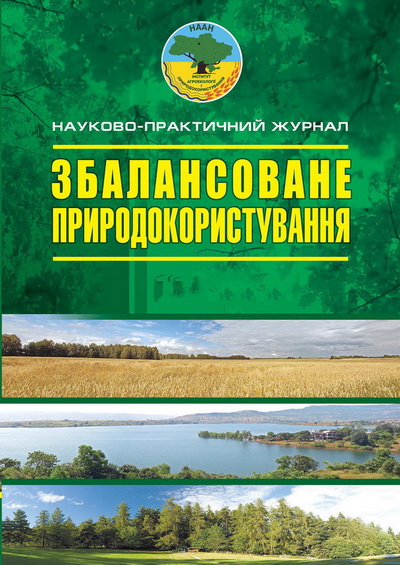ОСОБЛИВОСТІ НАКОПИЧЕННЯ ФТОРУ У ҐРУНТІ І РОСЛИНАХ У ЗОНІ ВПЛИВУ ТЕХНОГЕНЕЗУ
DOI:
https://doi.org/10.33730/2310-4678.3.2018.190381Ключові слова:
техногенні джерела, фтор, ґрунт, уміст водорозчинного фтору, гранично допустима концентрація, сільськогосподарські рослини, вегетативна маса, зерноАнотація
Статтю присвячено вивченню особливостей накопичення фтору у ґрунті і рослинах у зоні
впливу техногенезу. Актуальність дослідження фтору у ґрунті обумовлена властивостями цього
елемента через трофічні ланцюги негативно впливати на здоров’я людини. Мета досліджень полягала
у визначенні техногенних джерел надходження фтору в сільгоспугіддя Донецької обл. та вивченні
чинників, які впливають на шляхи і рівні накопичення фтору у ґрунті і рослинах. Методична
основа дослідження базується на таких методах, як: польовий, лабораторний, вимірювальний,
розрахунково-порівняльний, графічне відображення даних. Поряд із загальновідомими методами
використовували деякі спеціальні: аналізу і синтезу. Дослідження проводилися з використанням
атестованих та стандартизованих в Україні методик і методичних підходів. Аналітичні ви-
мірювання вмісту фтору здійснювали в зразках соломи, зерні та ґрунті, який відбирали з орного
шару одночасно з рослинними зразками. Відбір ґрунту та рослинних зразків проводили з орного
шару згідно з діючими вимогами і рекомендаціями. Статистичну обробку результатів проводили
за Б.А. Доспєховим.
На основі аналізу статистичних даних стосовно викидів промислових підприємств визначено,
що техногенними джерелами забруднення фтором агроландшафтів Донецької обл. є металургія і
енергетика. Ці підприємства щорічно здійснюють викиди в навколишнє природне середовище близь-
ко 200 т фтору. У межах до 5 км від джерела емісії концентрація водорозчинної форми у ґрунті
перевищує ГДК (10 мг/кг) від 1,5 до 3 разів. З віддаленням уміст розчинних форм знижується. За
межами техногенного впливу (10–15 км) концентрація водорозчинної форми фтору у ґрунті майже
не перевищує ГДК. Встановлено, що найбільше фтору міститься у вегетативній масі рослин, а
найменше — у зерні. Високою чутливістю до фтору характеризується ячмінь ярий і кукурудза,
в яких уміст фтору перевищував допустимий норматив у 2–2,5 раза. Менш чутливими до фтору
виявились пшениця озима і соняшник. Уміст елемента в зерні цих культур не перевищував норму
або балансував на межі ГДК. Не зафіксовано перевищення нормативного вмісту фтору (15 мг/кг)
і у побічній продукції досліджуваних сільськогосподарських культур.
Номер
Розділ
Ліцензія
- Автори залишають за собою право на авторство своєї роботи та передають журналу право першої публікації цієї роботи на умовах ліцензії Creative Commons Attribution License, котра дозволяє іншим особам вільно розповсюджувати опубліковану роботу з обов'язковим посиланням на авторів оригінальної роботи та першу публікацію роботи у цьому журналі.
- Автори мають право укладати самостійні додаткові угоди щодо неексклюзивного розповсюдження роботи у тому вигляді, в якому вона була опублікована цим журналом (наприклад, розміщувати роботу в електронному сховищі установи або публікувати у складі монографії), за умови збереження посилання на першу публікацію роботи у цьому журналі.
- Політика журналу дозволяє і заохочує розміщення авторами в мережі Інтернет (наприклад, у сховищах установ або на особистих веб-сайтах) рукопису роботи, як до подання цього рукопису до редакції, так і під час його редакційного опрацювання, оскільки це сприяє виникненню продуктивної наукової дискусії та позитивно позначається на оперативності та динаміці цитування опублікованої роботи (див. The Effect of Open Access).


